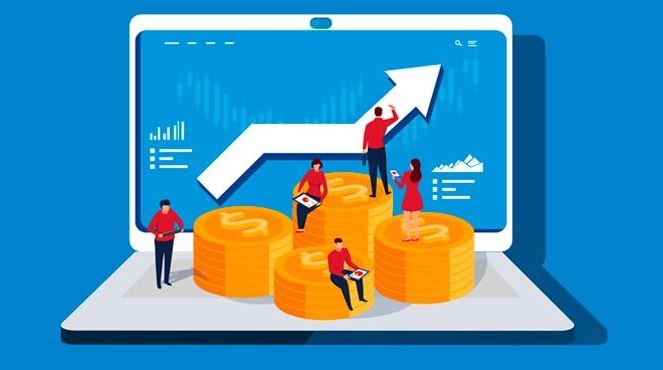Ecommerce success factors
Just take a good seat. Take a critical, open look at your webshop or e-commerce platform and try to remember why you made which choices. Your site looks sleek, the colors are familiar, the check-out process is smart. You regularly implement improvements and the results are not disappointing. But what do you do if we tell you that you realize at most half of your potential turnover, simply because you don't focus enough on measuring and optimizing the ultimate Ecommerce success factors?
With this challenging message, Ecommerce entrepreneurs Ian and Mark Hammersley have your attention immediately. Based on their years of experience in their Ecommerce In a consultancy and development practice in Manchester (Smartebusiness), they conducted research into the question of which Ecommerce success factors ultimately make the difference. They translated these factors into KPIs (measurable performance indicators). And they recorded that in a book that reads like a train, the Ultimate Guide to E-commerce Growth.
The Hammersley brothers chose a good time for the international introduction of their book. After all, attention to Ecommerce and the lure of new Ecommerce initiatives are experiencing a spike due to corona. Ecommerce is already recording impressive growth figures year-on-year, but the pandemic is providing another unprecedented boost. Existing Ecommerce entrepreneurs are also scratching their heads. Do I still stand out enough from the increasing competition? What can I do better to optimise the customer journey and attract the other half of the sales potential to me?
Self-proclaimed Ecommerce freaks
In their 'Ultimate Guide' Ian and Mark Hammersley share a series of interesting observations. For more than fifteen years they have been helping retailers realize their Ecommerce ambitions. The 'self-proclaimed Ecommerce freaks' grew up in a typical retail environment where commerce was the talk of the town.
“The discussions around the table focused on one question: what can we do to grow our family bakery. All opportunities and challenges were reviewed. And we just listen. We remember how our parents always managed to improve sales records during Easter. At a time when supermarkets tried to destroy us. That is where our passion for retail originated at the dining table. And my parents' bakery is still our great example. ”
Both the positive and negative experiences in the family bakery were the source of inspiration for the consultancy practice that the brothers started more than fifteen years ago with the focus on Ecommerce. Their services were broad: from strategic advice to the development, construction and optimization of platforms. Digital marketing and training are also part of their service package. A lot of attention has always been paid to SEO, for a long time the magical means to make websites rank well in Google. Until Google shook the market in 2011 and 2012 with new algorithms (the Panda and Penguin updates). Everything SEO certainties went overboard. Since then you have to work hard for a good ranking.
Ecommerce success factors translated into KPIs
"Before you can force a breakthrough, you have to hit a wall," according to Ian and Mark Hammersley. For them, the sweeping Google updates were the imaginary wall. They saw customer rankings plummet. As a result, they realized how risky it was to let the success of web shops and commercial platforms depend so much on success factors that you ultimately cannot influence one hundred percent yourself. Their search for factors that ensure sustainable success 'on their own' led to seven tangible KPIs.
The starting point for the research into sustainable Ecommerce success factors was the fact that more than 96 percent of all visitors leave a webshop or platform without actually making an order or purchase. This frustrating reality raises questions such as:
- where does the 96 percent go next?
- who represent the 4 percent that does create value?
- how did those 4 percent serious potential customers find my website?
- What exactly are they doing on my website and what do they expect?
Ecommerce success factors start with data
After you have detailed the answers to those questions, you can start building on sustainable success. This does not happen overnight, but it remains a matter of hard work. And optimal data management is a must. That is, the availability, accessibility and applicability of customer data the challenge is of all challenges. After all, your database is the source from which you derive truths and predictions.
Armed with user data, sustainable success is linked to a permanent focus on seven performance indicators according to the Hammersley brothers' theory. In their current consultancy practice, the emphasis is on objectifying, analyzing and optimizing those aspects that are crucial for filling the shopping cart and the step to conversion. The user-friendliness, speed and capacity of your site play an important role in this. Most important observation: investing in customer loyalty, increasing customer value and improving average order volumes usually yields more than focusing all your arrows on acquiring new customers and one-off promotions.
Plan, do, check and act
The Ecommerce success factors that the 'Ultimate Guide' offers you are the result of endless monitoring, reporting and analysis with specially developed tracking tools. The authors describe their approach as the plan, do, check, act-method. The common thread: day in, day out, uncovering what customers tell you through their search and purchase behavior and act consistently on it. And the guide provides valuable tips for that too.
Are the technology and scalability of your webshop or wholesale platform 100% calculated on the application of the ultimate Ecommerce success factors? Go for one independent webshop and IT advice.


